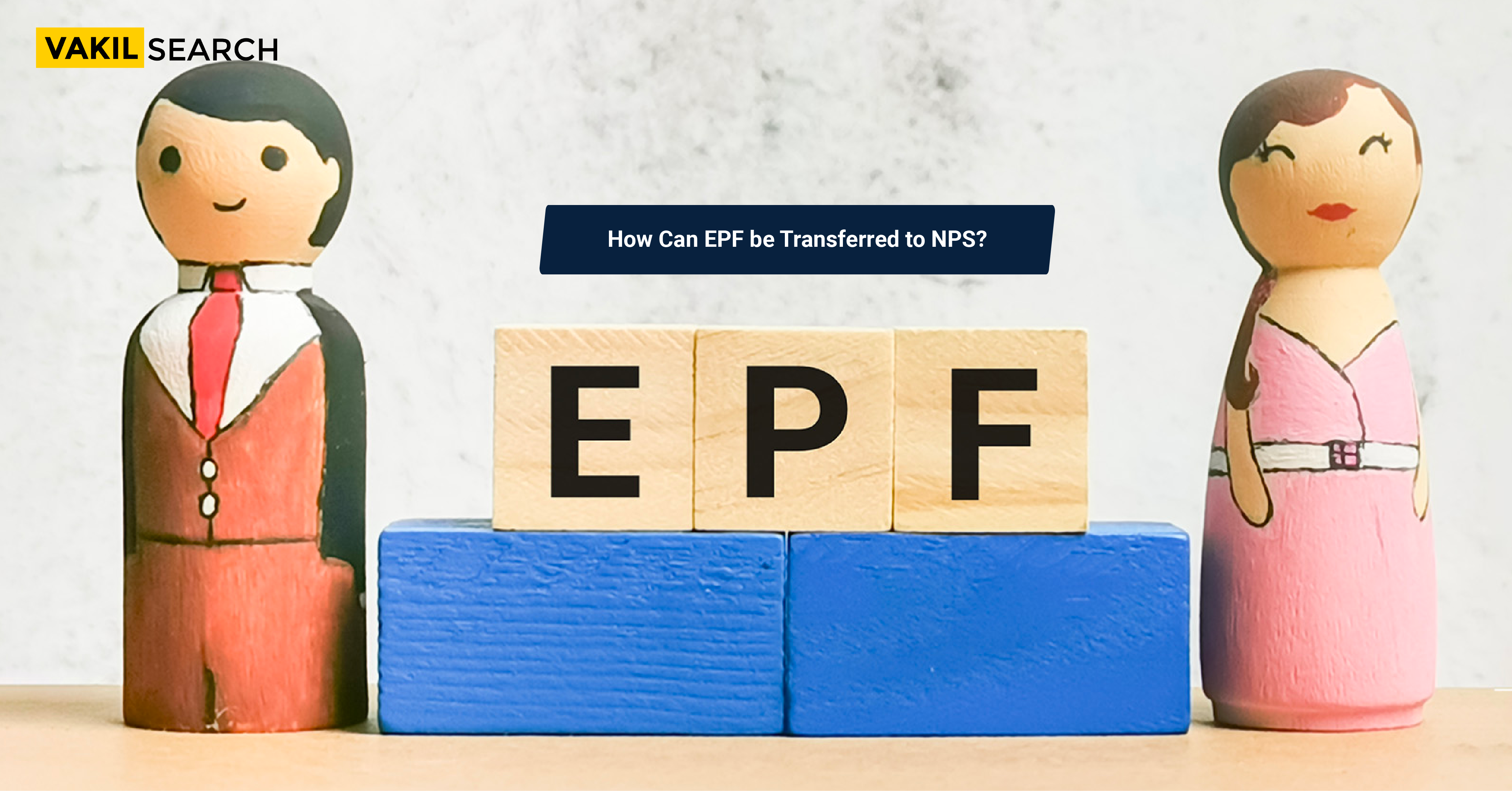This article provides a detailed guide on transferring EPF to NPS, including eligibility, steps, and tax implications. Unlock the benefits of financial flexibility and explore provident fund ITR services.
Are you contemplating transferring your Employees’ Provident Fund (EPF) to the National Pension System (NPS)? This move, proposed in Arun Jaitley’s 2015 Budget speech, offers salaried professionals a unique opportunity to manage their retirement savings more efficiently. You Can transfer Transfer Your EPF to NPS easily!
In this comprehensive guide, we will walk you through the process of transferring your EPF to NPS, highlighting key points, tax implications, and considerations along the way. Plus, we’ll introduce you to Vakilsearch’s ITR (Income Tax Return) services, designed to streamline your tax filing process and ensure financial stability.
Understanding the EPF to NPS Transfer Process
The transfer of funds from EPF to NPS is a strategic financial move that allows you to maximize your retirement savings. Here’s a step-by-step guide to help you navigate the process:
-
Verify Eligibility:
To initiate the transfer, ensure you meet the eligibility criteria, to know more about whether or not you meet the eligibility criteria, reach out to our experts with your specific questions.
-
Open an NPS Account:
To initiate the transfer you will need a Tier 1 NPS account. You can open one through your employer, Points-of-Presence (PoPs), or online via the eNPS portal: eNPS Portal. PoPs refer to banks or registered entities authorized by the Pension Fund Regulatory and Development Authority (PFRDA).
-
Submit Transfer Form:
Provide a transfer form to your employer, who will initiate the balance transfer from EPF to NPS.
-
Request for a Letter:
As an employee, request a letter stating the amount transferring from the EPF fund to be credited to your NPS Tier 1 account.
Your present employer or PoPs must mention the transfer from the PF/Superannuation fund in the remark section when uploading.
-
Government Employee vs. Private Sector Employee:
If you’re a government employee, the recognized PF/Superannuation fund can issue a cheque or demand draft (DD) in the name of: Nodal Office Name – Employer Name – Permanent Retirement Account Number (PRAN).
If you work in the private sector, the cheque or DD can be made under the name of: name of Point of Presence, Collection Account-NPS Trust – Subscriber Name – PRAN.
Tax Implications and Considerations
Before you proceed with the EPF to NPS transfer, it’s essential to understand the tax implications:
-
Tax Treatment:
- Transferred funds from EPF to NPS will not be taxed.
- You cannot claim a deduction under Section 80CCD for the transferred amount to NPS. This section allows deductions for new investments, not transfers.
-
EPF vs. NPS Returns:
- EPF traditionally offers a fixed annual interest rate, whereas NPS returns are market-linked and may vary.
- EPF funds are invested in government securities and bonds, offering a relatively stable return.
- NPS does not guarantee returns but has historically shown a range of returns from 7.86% to 14.30% since its inception.
-
Withdrawal Differences:
- EPF allows full withdrawal in a lump sum if you terminate your contract without taking up employment within two months.
- NPS permits employees aged 60 or older to withdraw a maximum of 60% in a lump sum, with the rest going to an annuity plan for a monthly pension.
Vakilsearch’s ITR Services: Secure Your Financial Future
As you navigate the intricacies of EPF to NPS transfers and manage your retirement savings, don’t forget to ensure your tax affairs are in order. Vakilsearch offers ITR services designed to simplify the income tax return filing process. Our experts ensure accurate and hassle-free tax returns, helping you stay compliant with tax laws and regulations.
With Vakilsearch’s ITR Services, You Can:
- Maximize tax deductions and exemptions
- Avoid penalties and errors in your tax returns
- Stay informed about changing tax laws
- Experience a smooth and stress-free tax filing process
The Takeaway
In conclusion, transferring your EPF to NPS is a strategic financial move that can enhance your retirement savings. By following the steps outlined in this guide and considering the tax implications, you can make an informed decision that aligns with your financial goals.
FAQs (Frequently Asked Questions)
Can I transfer my EPF to NPS if I have less than seven years of service?
Yes, EPF to NPS transfer is generally allowed for employees even without a minimum of seven years of continuous service. However, it's advisable to check with Vakilsearch experts for the most up-to-date information.
Is there any fee associated with transferring EPF to NPS?
No, there is typically no fee for transferring EPF to NPS. However, it's advisable to check with your employer or PoPs for any specific charges.
Can I partially transfer my EPF balance to NPS, or does it have to be the entire amount?
You can transfer a portion of your EPF balance to NPS, depending on your financial needs and goals.
Read more:-










